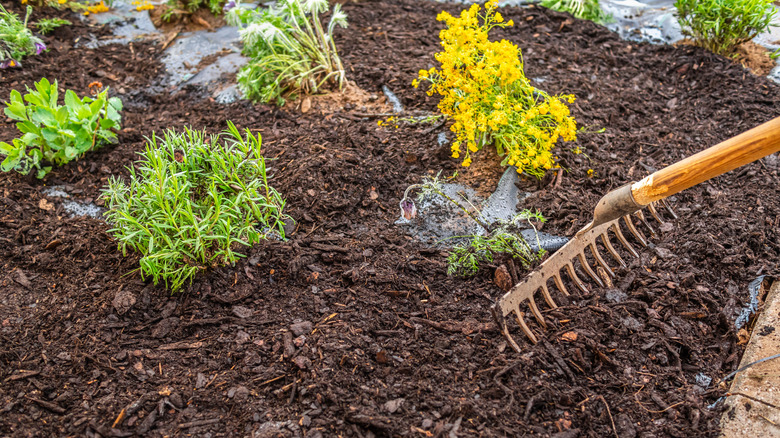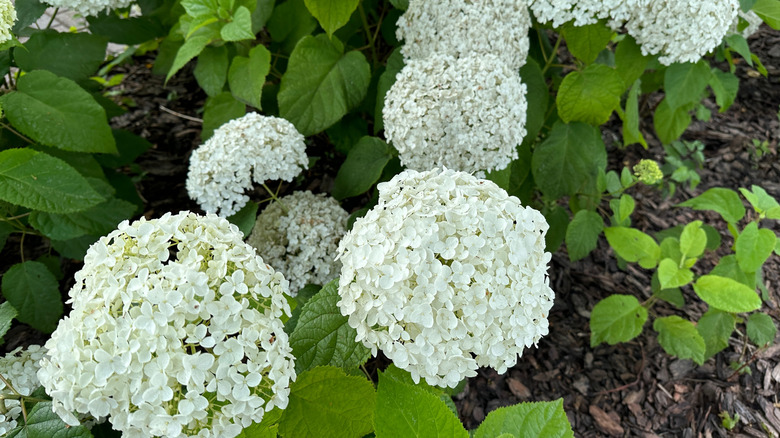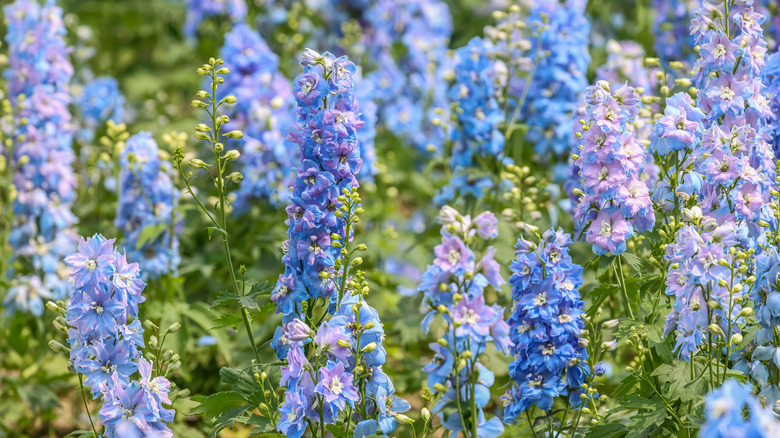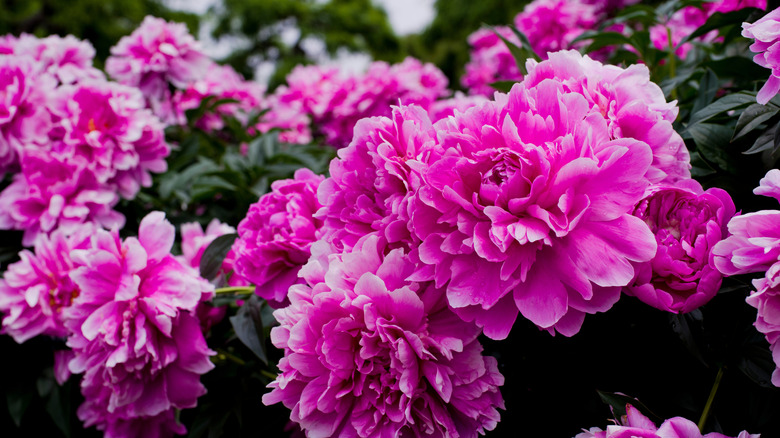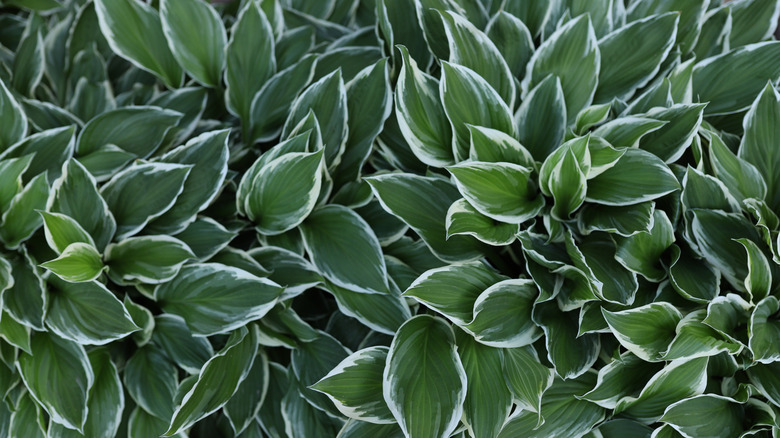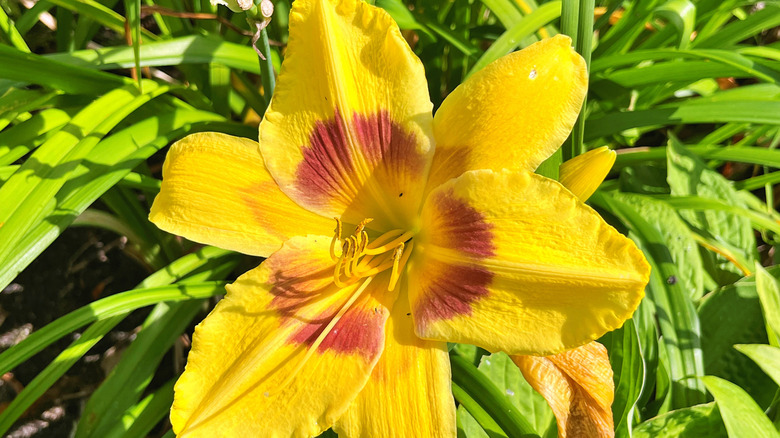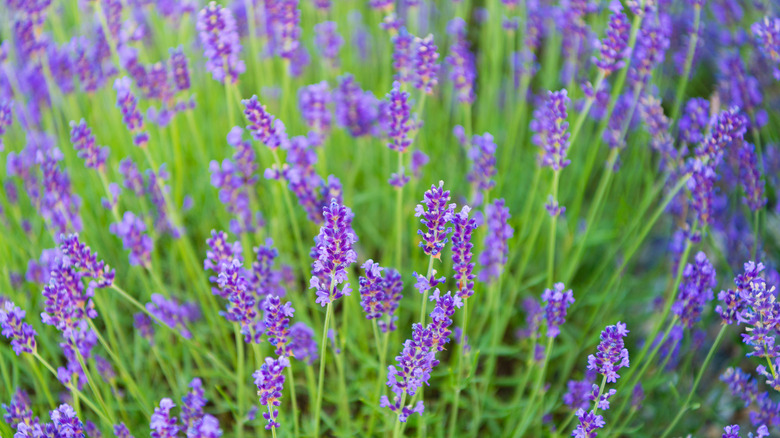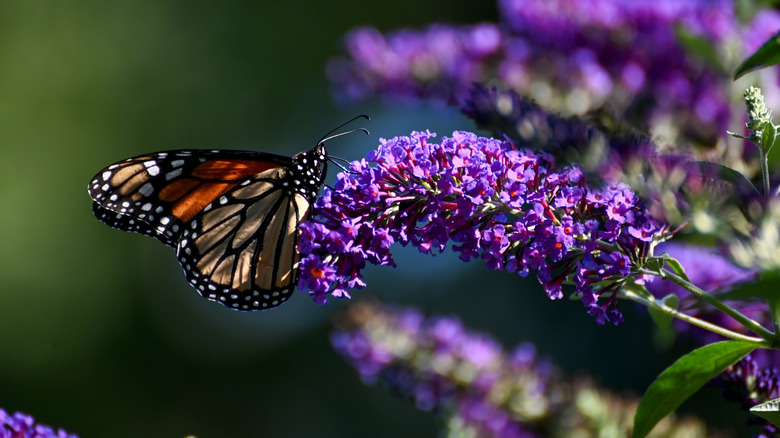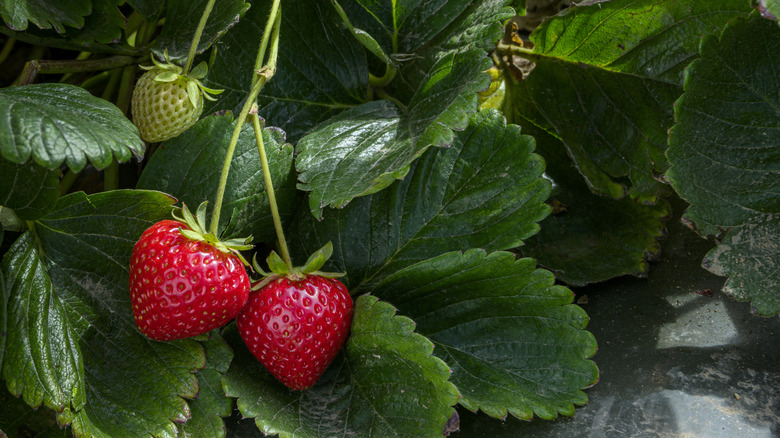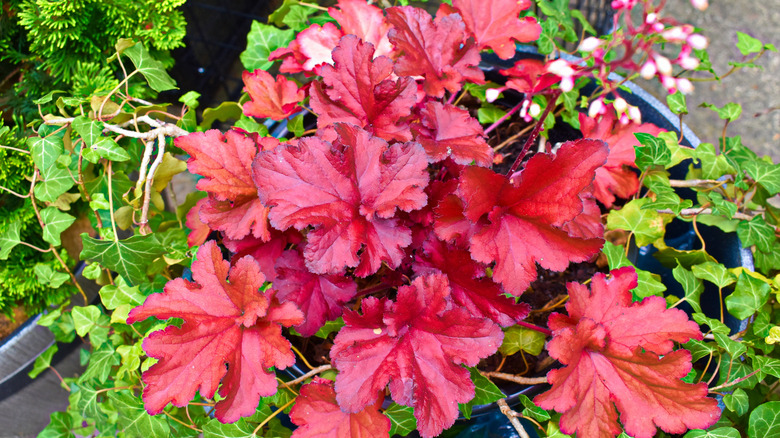15 Plants You Should Always Mulch In Fall For A More Successful Spring
Putting your garden to bed properly in the fall can make all the difference come springtime. It's crucial you take all the measures necessary to protect your perennials before you leave them to weather the coldest months of the year. Mulching is a great way to insulate your plants and help set them up for a successful spring. Not only does a layer of mulch protect your plants from harsh freeze-thaw patterns, but it also aids in nourishing them if you use organic mulch such as pine needles, fallen leaves, sawdust, or grass clippings. Plants such as lavender, hosta, and asparagus can greatly benefit from fall mulching.
Mulching is a great way to cultivate stronger, healthier plants in the spring. It protects plants, helps stave off weeds, maintains moisture, and prevents soil compaction. But before you go spreading it across your entire garden, there are some caveats to keep in mind. If you mulch too much or use heavy mulch such as dense wood chips, you may inadvertently trap too much moisture and cause a fungal disease problem. Not all plants will benefit from mulching during the fall, either. Freshly planted seeds don't need mulch, for instance. Just like mulch suppresses weeds, it can also prevent seeds from germinating properly. Instead, focus on mulching these 15 plants for a more successful spring.
Coneflowers
Coneflowers (Echinacea) are large, daisy-like flowers that are considered perennials in USDA hardiness zones 3 through 9. They're prized for their medicinal properties and abilities to attract beneficial pollinators. When fall arrives, mulching your coneflowers will help protect them from biting winds and temperature fluctuations. Mulch can also prevent weed growth and help maintain optimal water retention. Apply a thick layer of dry leaves or evergreen foliage stems around your coneflowers, being careful to avoid making contact with the stems. Once temperatures begin to rise in early spring, remove the mulch so your flowers can regrow.
Hydrangeas
While hydrangeas (Hydrangea spp.) are considered a fairly hardy plant, they can still benefit from some extra TLC before winter arrives. Mulching is one of our favorite tricks for successful hydrangeas. Just like with most plants, mulch helps to insulate their roots. Opt for pine needles or shredded bark to promote the slightly acidic, nutritious soil that hydrangeas crave. Cover the plant with at least 18 inches of mulch for best results. You can even corral your hydrangeas in a cage and fill it with dry leaves (except maple leaves) to cover the entire plant.
Larkspur
Larkspur (Consolida ajacis) is a spiked, colorful staple in cottage gardens. Its potential hinges on proper care and attention. However, it won't survive the winter in cold, wet soil, but this is where mulch comes in. First, cut back your larkspur in the fall or early winter (fall if you're in zones 3 through 5). From there, apply straw or wood chips around the crown of the plant. This encourages proper insulation so your plant comes back strong in the spring. Promptly uncover in spring to allow for adequate air flow.
Peonies
Beloved for their bulbous, fluffy bloom, peonies are a favorite in gardens everywhere. They are suitable to keep in the ground during the winter in zones 3 through 8. If you tend to them diligently, they will thrive in your garden for decades. All peonies can benefit from a layer of shredded bark or pine needles, but newly established plants benefit even more. Just be sure to keep the mulch to a thin, loose layer and wait until the ground lightly freezes. You should also apply mulch after dividing and replanting peonies in the fall.
Hostas
Another plant you can help thrive by mulching in the fall is the hosta (Hosta spp.). Prized for its broad, showy leaves, this plant adds structure and texture to a garden. Hostas are hardy in zones 3 through 9. They have shallow roots that may be vulnerable to early frost, so apply a generous layer of pine needles or straw around your plants in November. This ensures they will successfully weather the thawing cycles and maintain adequate moisture. You can remove the mulch once spring arrives.
Daylilies
Daylilies (Hemerocallis) feature a stunning bloom, flowering from spring all the way into fall. They're considered hardy in zones 4 through 9 and are actually quite resilient year-round. Despite their unkillable reputation, they still require proper attention to thrive. To really care for your daylilies, you can either dig up their tubers or simply apply a layer of thick mulch. This is essential in dry climates to keep the plant moist while also suppressing weeds.
Lavender
With generous blooms and a lovely aroma, lavender (Lavandula angustifolia) is a wonderful plant to keep in your garden. It can survive the winter in the ground in zones 5 through 10. However, in colder regions, you should protect your plants with straw or evergreen foliage stems, while being careful to avoid covering the crown of the plant to avoid rot. Gravel or sand can also be a good option since these materials can absorb the heat from the sun and reflect it onto the plant to give it a good start for spring.
Astilbes
Astilbes feature a fluffy, feather-like bloom and are considered a perennial in zones 3 through 9. While these plants are actually quite easy-going in the spring and summer, they can use a bit of extra care in the fall and winter. Astilbes are moisture-loving plants, and mulch helps keep them warm and moist all winter. After the first frost, cover the base of your plants with 2 inches of mulch. Don't stress about uncovering them right away in spring — they can actually benefit from mulch over the summer in dry climates too.
Tulips
According to a study out of Cornell University, tulips (Tulipa spp.) actually produce more flowers when planted using mulch. Instead of keeping your tulips underground or storing their bulbs for the winter, consider lifting the bulbs and replanting under a 2 to 4 inch layer of mulch. This method is called top planting, and you can use this to plant your tulips under mulch as long as temperatures are still consistently hovering around 40 to 50 degrees Fahrenheit.
Butterfly bush
The butterfly bush (Buddleia davidii) features bunches of beautiful flowers that pollinators flock to in the growing season. If you live in a northern climate, your butterfly bush will need some extra care over the winter to ensure it thrives in the spring. Mulch will help insulate its root zone, protecting it from harsh winds and freezing temperatures. Once the plant dies back to the base, apply about 6 inches of mulch around it. Just take care not to place it too close to the stem to avoid root rot.
Strawberries
There's nothing quite as sweet as growing your own strawberries. In mild climates, you can technically get away with skipping winter maintenance. However, your plant will produce more blooms and fruit if you protect it from the cooler temperatures. Hopefully, you've already pruned and fertilized your plant about a month before your first frost. Once temperatures dip and your region experiences its first frost, apply a 3 to 5 inch layer of pine needles or straw in a mound on top of the plant. Remove once you notice the shoots poking through in the spring.
Coral bells
Coral bells (Heuchera) are a broad group of herbaceous perennial groundcovers that come in a variety of colors. Also known as alumroot, these plants are hardy in zones 3 through 9. While mostly cultivated for their beautiful foliage, they also offer delicate, pink-red blooms. Coral bells will suffer in the winter without proper care. Apply a lightweight mulch like dead, shredded leaves or pine needles around the plants, leaving a gap around the stems. Mulch helps insulate their roots while maintaining moisture levels.
Roses
Roses (Rosa spp.) are a cherished staple in many gardens. Prized for their iconic beauty and signature fragrance, most varieties are known to be a bit high-maintenance. That being said, it's vital to protect your plants in the winter. Roses benefit from a healthy layer of mulch year-round. In the fall, mulch protects this plant's sensitive roots while also enriching the soil to help your roses look their best. Apply a 2 to 3 inch layer of compost, straw, shredded bark, or leaf mold around the circumference of the plant. Be sure to leave a gap around the stem.
Asparagus
If you're searching for a crop that will come back again and again each year, asparagus (Asparagus officinalis) is the vegetable for you. While this plant is fairly low-maintenance, it can still benefit from some TLC before winter. Start by cutting the dead foliage right down to the ground. Now you can apply a 6-inch layer of mulch or compost right on top of the asparagus crowns to insulate them for the winter.
Perennial herbs
Oregano, thyme, rosemary, and chives are all considered perennial herbs. In some areas, these herbs will grow year-round, while in colder climates, they die back in the fall and pop back up in the spring. If you live in zones 3 through 5, mulching your perennial herbs can make all the difference between whether your roots will survive the winter or not. If you want to enjoy your plants in the spring, apply a 4 to 6-inch layer of shredded bark or straw to protect these delicate plants from the winter thaw-freeze cycle.
